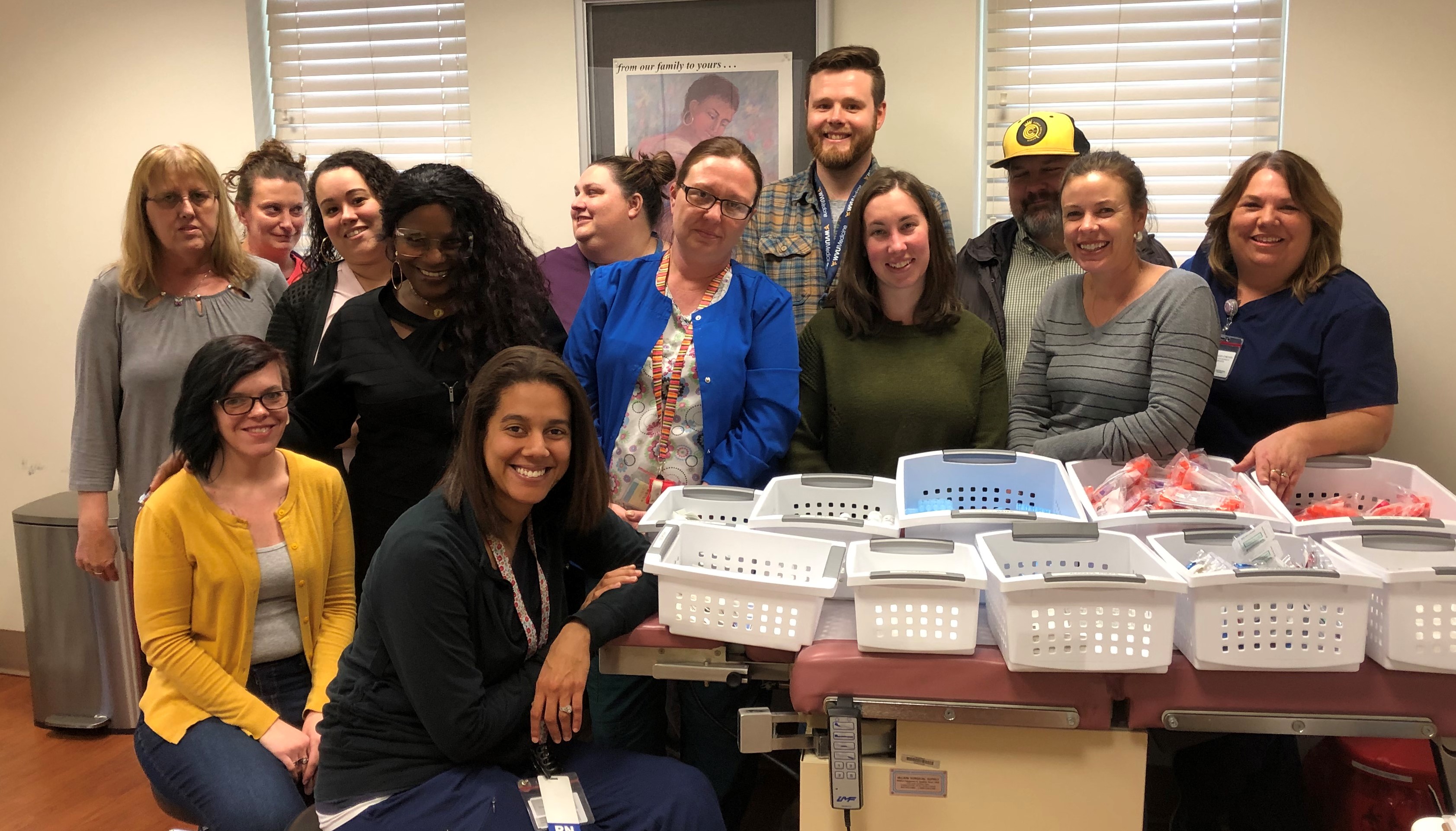|
PERF's new COVID-19 resources and the Martinsburg, WV harm reduction program
Dear PERF members,
It’s been another week to remember at PERF, as we scramble to keep up with COVID-19 developments, share information about what police and sheriffs’ departments are doing, and adjust our own operations to protect our employees’ health.
Fortunately, PERF can react quickly when major events impact policing. There are two things I have always valued since the day I came to PERF – our amazing members who are so responsive and thoughtful, and our equally loyal and hard-working staff. And that is why we’re able to move quickly. On March 6, there were only about 250 known COVID-19 cases across the United States, but it was really getting our attention. So literally within a day, we were able to survey our members, get more than 100 responses, and send the results to our members the next morning in the March 7 issue of PERF Trending. The entire PERF staff has played an important role, and I want to recognize Craig Fischer, James McGinty, and Kevin Morison for being the leads on communications at PERF.
This week, PERF launched a daily COVID-19 Report that we send to members every morning, with information we have been getting from PERF members. We also worked with the National Police Foundation and the Major Cities Chiefs Association on a webinar with CDC officials and police executives, including Chief Cherie Harris of Kirkland, WA and New Rochelle, NY Deputy Police Commissioner Robert Gazzola.
And today, I’m announcing a new section of our website that contains COVID information that is timely and practical for police chiefs and sheriffs. If you have General Orders, policy statements, training guides, or other COVID-related information to share via this resource, please send them to James McGinty of PERF at [email protected].
Of course, PERF’s own operations have been altered by the crisis. Nearly all PERF employees are working every day from home. I’m grateful to Ken Hartwick and Kit Lau of PERF for having the foresight to build the computer systems that allowed PERF staffers to simply take home their PERF-issued laptops, plug them in, and do everything they were able to do in the office.
Each day, a couple PERF staffers still come into the office to serve as a skeleton crew, but downtown Washington, DC is like a ghost town. You walk into our building and it feels like Chernobyl. Our skeleton crew members each have their own office, and we keep apart from each other.
Here’s a photo looking out my office window at L Street at lunchtime yesterday. Normally, you would see a half-dozen food trucks on the street, heavy traffic, and hundreds of people on the sidewalks getting their lunch.

Of course, even though that photo looks pretty grim, I’m glad that nearly everyone in DC – and in many other communities across the country – is staying home, because that’s how we hope to slow down the spread of the virus and save lives.
A model program in West Virginia on a different public health issue
I thought maybe I should discuss something else in this issue of Trending, just to have a brief respite from the COVID crisis. And I have an inspirational story to tell.
Recently I was asked by the Centers for Disease Control and Prevention to talk about needle exchange programs, which help stem the opioid crisis by reducing the sharing or re-use of hypodermic needles by opioid users. Honestly, I didn’t know much about these programs and how they work. So I reached out to Chief Maury Richards in Martinsburg, West Virginia – a state that has been devastated by the opioid crisis. Maury told me that their county program is clearly the best in West Virginia, and that it has won national recognition. Maury was part of a community-wide Task Force that took a comprehensive look at the drug issue in his community.
Maury connected me with Angie Gray, Nurse Director of the Berkeley/Morgan County Board of Health, who administers the program. I decided that we should see this program in person, so PERF Fellow Shelly Katkowski and I made a day trip to Martinsburg to meet with Angie.
The story that Angie told us was heartbreaking, maddening, but also hopeful. As Angie describes the situation, West Virginia was one of the states hardest hit by prescription opioid abuse. Doctors would prescribe 360 oxycodone pills for patients with minor sports injuries, ignoring the fact that the prescription pills are chemically the same as heroin. So people got addicted, and when lawmakers and the medical profession finally cracked down on over-prescribing of the pills, people switched to heroin, which was significantly less expensive on the street and suddenly became more available. Heroin became the drug of choice, and with the onset of fentanyl being mixed with heroin, overdose deaths skyrocketed.
Nurse Director Gray explained that it is extremely difficult for a person addicted to opioids to break their addiction. Addicted persons often say they would rather die than go through withdrawal, because withdrawal is so painful. When Shelly and I were at the Health Department clinic where the program is operated, we met a mother and her son who were both addicted. The son had been taking pills from his mother at an early age and became addicted. The program is one of the bright spots in their lives.
Angie’s program is designed to keep addicted persons safe while they try to overcome their addiction. People refer to these programs as “needle-exchange” programs, but that is really misleading. A better name is “harm reduction program,” because it is designed to reduce the transmission of hepatitis, HIV, and other diseases, and to help addicted persons enter treatment programs, while minimizing the harms associated with using heroin in the meantime.
Importantly, according to the latest data from CDC, West Virginia has Hepatitis B and C rates 6 to 11 times the national average. So beyond the addiction issue, West Virginia is facing a public health emergency as addicted persons share needles and increase hepatitis and other infections dramatically.
In the needle-exchange portion of the program, addicted persons come in and receive about 40 clean hypodermic needles, which is enough to last them a week. A week later, they bring back the used needles and are given fresh ones. In fact, they are given a full “kit,” which includes needles, sterile water, “cookers” to use instead of dirty spoons, alcohol swabs, bandages, and importantly, naloxone.
At first, this seems counter-intuitive. Why would you give needles to addicted persons? But it is only when you realize that without the program, addicts will wind up using dirty needles that will spread hepatitis and HIV that you understand the importance of the program.
Chief Richards noted that the success of the program can be measured by the extremely high return rate on used syringes, which is more than 90 percent. Addicted persons clearly see the value of the program in protecting their health. And it helps protect the community by reducing the number of dirty needles on the street or in parks.
Also, when people come into the clinic, there are “Recovery Coaches” who work to get people off of drugs – if they are ready. The coaches do this in a non-judgmental way.
It is essential that harm reduction programs must have the support of local police departments, Angie said. The Martinsburg Police Department is one of the program’s most vocal supporters, “because it is so effectively monitored and administered,” Maury told me.
Angie is a success story in her own right. Brought up in West Virginia by parents who were not able to attend college, Angie worked her way through college and then obtained a Robert Wood Johnson scholarship. She inspires confidence in everything she does, and is a local success story in saving lives.
Here are a couple news stories about the program:
Berkeley County nurse receives governor's 'Living the Dream' Award
Eastern Panhandle nursing director takes local opioid battle to Capitol Hill
And here’s a photo I snapped of Nurse Director Gray and her crew who run the harm reduction program. Angie is at the far right.

OK, back to our current reality. Stay safe and healthy, everyone. I’m certain that Americans across the country are grateful that our first responders are still on the job, protecting public safety and health. Keep up the important work you are doing.
Best,
Chuck
PERF’s Weekend Clips
In late 2013, acting on a community tip, police detectives in Delaware began investigating massage parlors operated by a man named Da Zhong Wang. They were suspected fronts for prostitution and human trafficking. After a sting operation, police arrested Wang in December 2014 on charges of promoting and permitting prostitution. He pleaded guilty to the second charge, a misdemeanor. His certified massage technician license was suspended, and Wang closed the Delaware parlors and moved to New York.
But prosecutors weren’t done with him yet. In May 2016, the state sued Wang in civil court for racketeering. And this time, they had additional help: Collective Liberty, a D.C.-based nonprofit that is a cross between a tech start-up and an advocacy group whose mission is to fight human trafficking using data and technology.
Collective Liberty helps law enforcement by compiling a massive amount of data — from court documents, news reports, Freedom of Information Act requests, prostitution websites and firsthand survivor accounts — into a web-based tool. Using artificial intelligence and machine learning, Collective Liberty’s systems find connections among people, bank accounts and past prosecutions, building rough sketches of criminal networks involved in trafficking. Then, the group hands that information to the police.
Between August 2017 and March 2018, 12 teenagers in the broader Massillon, Ohio area killed themselves. That’s a suicide rate more than seven times the national average for 10 to 19-year-olds, and more than 11 times the number of child and teen suicides the area had in past years.
The incidents prompted officials of the 6,000-student district to take a hard look at the way their schools operated, and to find ways to better monitor both student mental health and possible outside threats. They brought in David Morgan, a former special agent with the Federal Bureau of Investigation, to oversee that effort.
After 2014’s Proposition 47 passed, which reduced many felonies to misdemeanors, Los Angeles City Atty. Mike Feuer was looking for new approaches. Clogging the courts with people charged with misdemeanor drug arrests, trespassing or petty theft seemed counterproductive. Few defendants go to jail for those transgressions; they just end up with longer rap sheets and lousier prospects.
Jamie Larson spent a couple of years developing the LA DOOR, “Diversion, Outreach, and Opportunities for Recovery,” which launched in January 2017. The idea is to divert people before they ever land in the criminal justice system. The program, which serves about 260 people in various stages of treatment and recovery, is funded through the end of the year, and then she hopes to be able to raise $1 million a year after that to keep it going. Larson says the program has made a difference for many of its clients, something she expects an ongoing Rand Corp. study to confirm. A handful are now living in transitional housing.
|